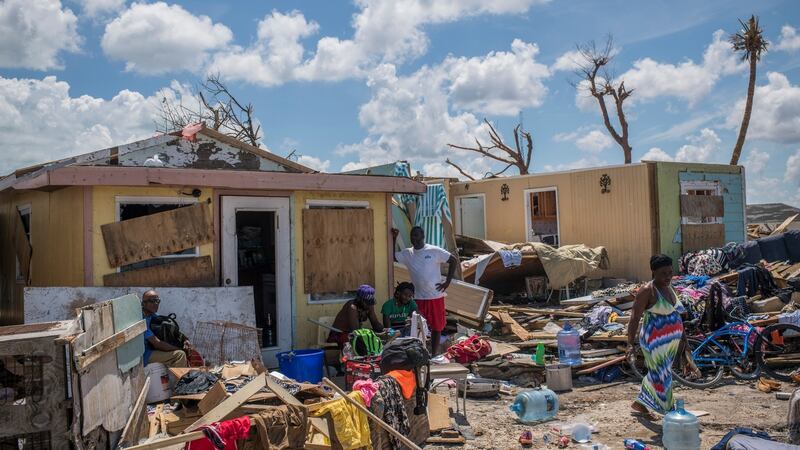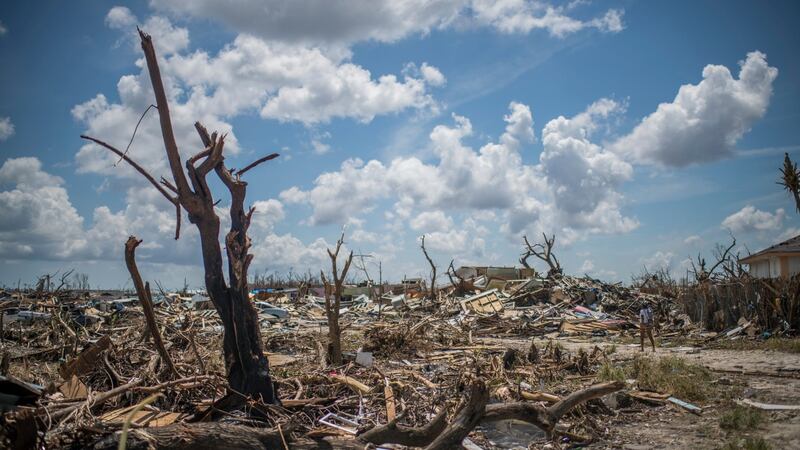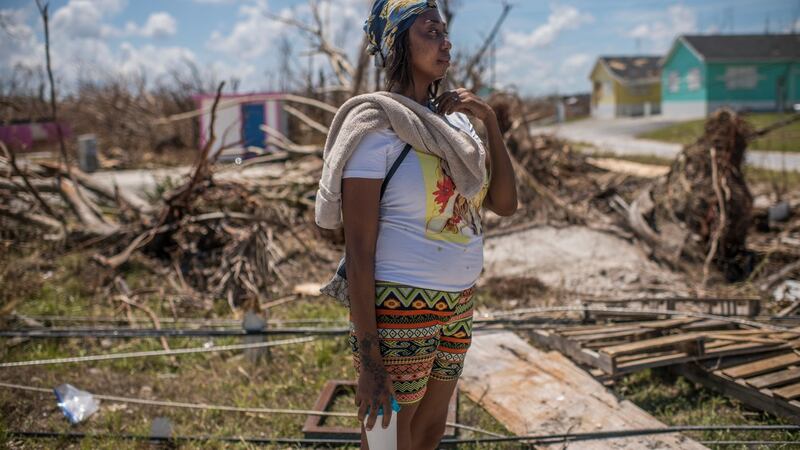The corpse was lying on its back, dressed in black shorts and a red shirt, arms outstretched, face toward the sky. There is no telling where the man died, or exactly when, or how. But Hurricane Dorian’s swirling, pounding floodwaters receded early last week to reveal his body sprawled amid the wreckage of a vast shantytown here in Marsh Harbour, the capital of the Abaco Islands.
On Sunday, a full week after the hurricane hit, the corpse was still where it had come to rest. The extent of the damage here and elsewhere in the Abaco Islands is so great, the work of assessing it so arduous and the Bahamian government so overwhelmed that a full accounting of the missing and dead may not be known for weeks or even months.
The official death toll attributed to the hurricane remained at 44 but there is no estimate yet of how many people are unaccounted for. The Bahamian security forces are still responding to reports of missing and trapped people, officials said, and teams of forensic investigators are still combing through the storm debris.

Officials could not be reached for comment on why the bodies have not yet been collected. But that body – splayed on the foundation of a house that, like the rest of the neighbourhood, had been turned to splinters – was a grim reminder that there are more deaths to be counted and perhaps many more.
“Listen, it’s been a week,” said McAdrian Farrington. He lost his 5-year-old son and namesake when the floodwaters rose in Murphy Town, just west of Marsh Harbour, after he put the boy on the roof for safety. “Bodies are decomposing day by day.”
His child’s body has not been found.
Hurricanes are indiscriminate in where they strike but they often take a disproportionate toll on the poor, who may live in less resilient structures and in areas prone to flooding. In the Abacos, among the hardest hit neighbourhoods were shantytowns mostly populated by poor Haitian immigrants, many of them undocumented.
And though the government has not provided the identities of the victims, or information about where they died, many Abaconians suspect that some of the highest concentrations of fatalities will be in the sprawling, illegally constructed shantytowns of Marsh Harbour known as the Mudd and Pigeon Peas.
Thousands of people, most of them Haitian labourers and their families, lived in those two contiguous communities, labyrinths of rudimentary homes mostly built from plywood and two-by-fours. While the Bahamas has one of the strictest building codes in the region, most if not all of the structures in the Mudd and Pigeon Peas did not adhere to them.
The hurricane last week blasted the neighbourhoods’ homes to pieces and reduced the area to a vast debris field of splintered wood, pulverised cinder block, twisted metal, scattered personal belongings – and bodies. There are still corpses pinned under fallen timber, wedged where the surging floodwaters deposited them. And former residents know where they are.
"Do you want to see them?" asked Herbert Luberal (47), who had lived for years in Pigeon Peas but fled when the hurricane approached.
He returned this weekend to check on a friend. Luberal turned and headed into the ruins of the neighbourhood. Wearing flip-flops, he carefully picked his way through piles of battered construction material that had once been homes, and over the artefacts of lives eked out on the margins of Bahamian society: a pickaxe, a snorkel, chicken feed, a Haitian passport, a Winnie the Pooh backpack.

A putrid odour had settled over the neighbourhood: the smell of death.
Luberal picked up a roll of toilet paper, ripped off a strand and pressed the wad against his mouth and nose. “There,” he said, pointing to a body jackknifed beneath a collapsed wall.
Five yards away, the swollen foot of another corpse protruded from beneath a stack of wood topped by a stray car tire. Two other residents – Johnly Pierre (47) and Ansernio Pierre (69) – appeared and said they knew of more. They headed deeper into the maze of half-standing structures and piles of detritus. Power cords snaked through the rubble. The neighbourhood had been powered on electricity stolen from the city’s grid and shared from home to home.
The men had built their own homes using whatever materials they could find. “If you build by yourself, you can’t build strong,” the elder Pierre explained. “You build a little one.”
One of the men pointed into a narrow passageway between two damaged homes: another corpse. Not far away was a woman’s body, pinned under a piece of metal and branches torn from a tree, next to a jumble of splintered packing crates. In a 45-minute tour that covered only a small section of the Mudd and Pigeon Peas, we saw six bodies.
“This area here?” said the younger Pierre. “Plenty dead.”
The men suspected that there were more bodies that nobody had yet discovered, and the pervasive stench of rot suggested they were right. Yet none of the men had seen government teams in the area recovering corpses. “They don’t even check it,” Luberal said. “They don’t care.”

The government crews looking for bodies have been working in Marsh Harbour throughout the week, though it remained unclear how they chose their locations and when they planned to enter the Mudd and Pigeon Peas.
Requests for interviews with the commanders of the Royal Bahamas Police Force and Royal Bahamas Defence Force in Marsh Harbour were declined or went unanswered, and the chief governmental administrator for the region was unreachable on Sunday.
On Saturday, a forensics team of about a dozen men and women dressed in white hooded jumpsuits descended on a property near Pigeon Peas, following up on a report of bodies trapped in a collapsed church. They pulled three bodies from the rubble, wrapped them in plastic body bags and laid them out on the back of a flatbed truck.
Minutes later, after the truck had driven away, Michelle Guerrier approached the site, flustered. She was the niece of one of the victims and knew the others, and she had hoped to bear witness to the extraction of their bodies.

“I’m late,” said Guerrier (37), a resident of Pigeon Peas. “I couldn’t see them for the last time.” The three victims had sought shelter in the church during the hurricane, she said.
Dejected, Guerrier turned the corner, slipped through the tangled branches of a fallen tree and into the Pigeon Peas, picking her way carefully through the wasteland of her destroyed neighbourhood. – New York Times
















